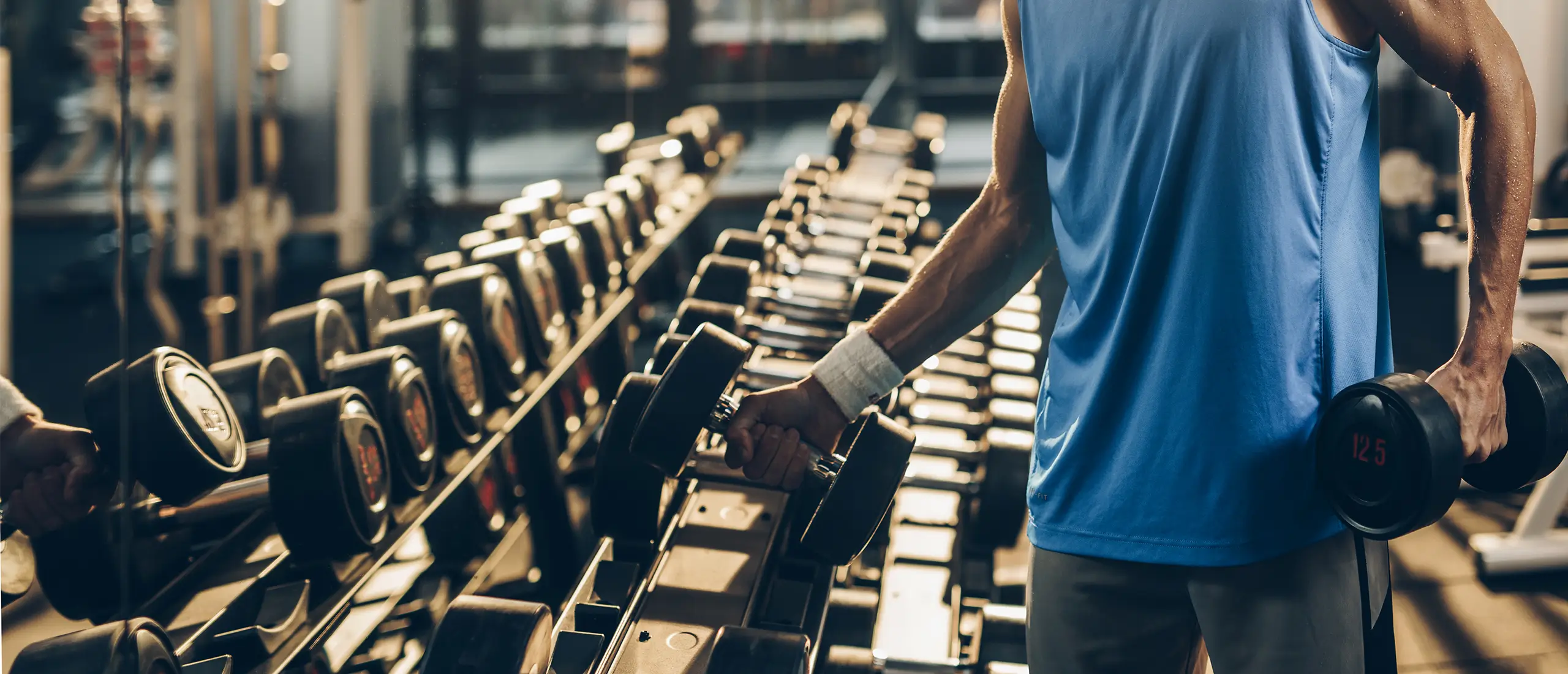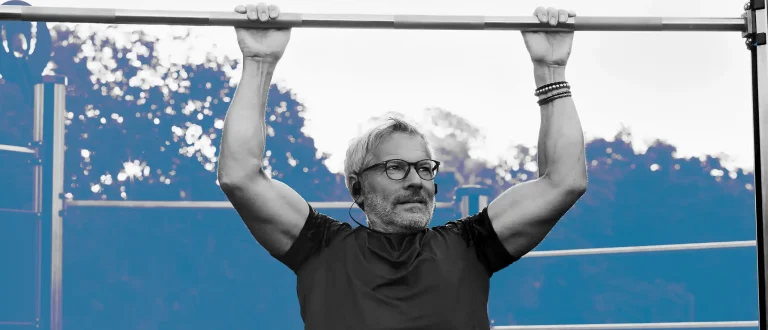
Weak Grip Strength? You Might Be Aging Faster
There’s a reason why grip strength is so important: you need it daily.
When you pick up a box, move a chair, vacuum, cook, or even drive, you’re calling on your grip strength. It’s one of the quickest ways to bigger lifts, building muscle, and serious training gains.
Grip strength is also associated with accelerated biological age. Specifically, the weaker your grip strength, the older your biological age, per results published in the Journal of Cachexia, Sarcopenia and Muscle (1).
In other words, poor grip strength can age your body faster.
What is grip strength and how can you improve it?
What Is Grip Strength?
Grip strength isn’t just your hand strength. It’s how firmly and securely you can hold onto things, combined with how heavy those things are.
Your grip involves everything from your forearms muscles that run from your elbow to wrist—like your flexor digitorum profundis, flexor pollicis longus, and extensor digitorum communis—down to the muscles in your hands and fingers.
Weak grip strength has been shown to be a better predictor of adverse health events like cardiovascular disease, stroke, and myocardial infarction than systolic blood pressure (2). Another study found that those with lower grip strength were more likely to have diabetes or record a higher blood pressure (3).
What Did the Research Show?
The study followed 1,274 middle-aged men and older adults over the course of 8 to 10 years. They modeled the relationship between biological age and grip strength using three “age acceleration clocks” based on DNA methylation—a process that provides a molecular biomarker to estimate the pace of aging.
The clocks were originally modeled from various studies examining diabetes, cardiovascular disease, cancer, physical disability, Alzheimer’s disease, inflammation, and early mortality.
Both older men and women showed an association between lower grip strength and biological age acceleration across the DNA methylation clocks.
“We’ve known that muscular strength is a predictor of longevity, and that weakness is a powerful indicator of disease and mortality, but for the first time, we have found a strong evidence of a biological link between muscle weakness and actual acceleration in biological age,” says Mark Petersen, lead author of the study and rehabilitation at University of Michigan.
Petersen said the discovery could show that if you maintain muscle strength across the lifespan, you may be able to protect against common age-related diseases. “We know that smoking for example, can be a powerful predictor of disease and mortality, but now we know that muscle weakness could be the new smoking,” he said.
How to Improve Your Grip Strength
Grip strength is something you can improve quickly. First, establish your baseline strength. You’ll need a grip strength dynamometer, a device designed to measure the maximum isometric strength of the hand and forearm muscles, but once you test, build up your grip strength by hammering these exercises.
Deadlifts
The simplest way to stress your forearms and improve your grip strength is lifting heavy. Deadlifts are the perfect heavy lift because of the variety of hand grips you can use. Try a barbell deadlift, trap bar deadlift, or dumbbell deadlift to mix things up.
Zottman Curl
A Zottman curl is a bicep curl that involves pausing at the top of the curl and rotating your palms away from you before lowering. This rotation is key to developing forearm strength. Plus, it’ll work your biceps.
Farmer’s Walks
Farmer’s walks are simple: grab a weight in each hand, hold it at your sides, and walk. The aim: walk as long as you can while carrying the weight. The great thing about this exercise is you can use any piece of equipment to get it done.
Dead Hang
Of course, pull-ups will increase your grip strength; but if you aren’t quite there yet, a dead hang will do. Simply hang from a pull-up bar as long as possible. Aim to hang for 15 seconds and work your way up to longer holds.
SHOP HAND GRIP STRENGTH
References
1. Petersen, M. et al (2022). Grip strength is inversely associated with DNA methylation age acceleration. https://onlinelibrary.wiley.com/doi/full/10.1002/jcsm.13110
2. Leong, D. et al (2015). Prognostic value of grip strength: findings from the Prospective Urban Rural Epidemiology (PURE) study. https://www.thelancet.com/journals/lancet/article/PIIS0140-67361462000-6/fulltext
3. Mainous 3rd, Arch et al (2015) Grip Strength as a Marker of Hypertension and Diabetes in Healthy Weight Adults. https://pubmed.ncbi.nlm.nih.gov/26232901/











